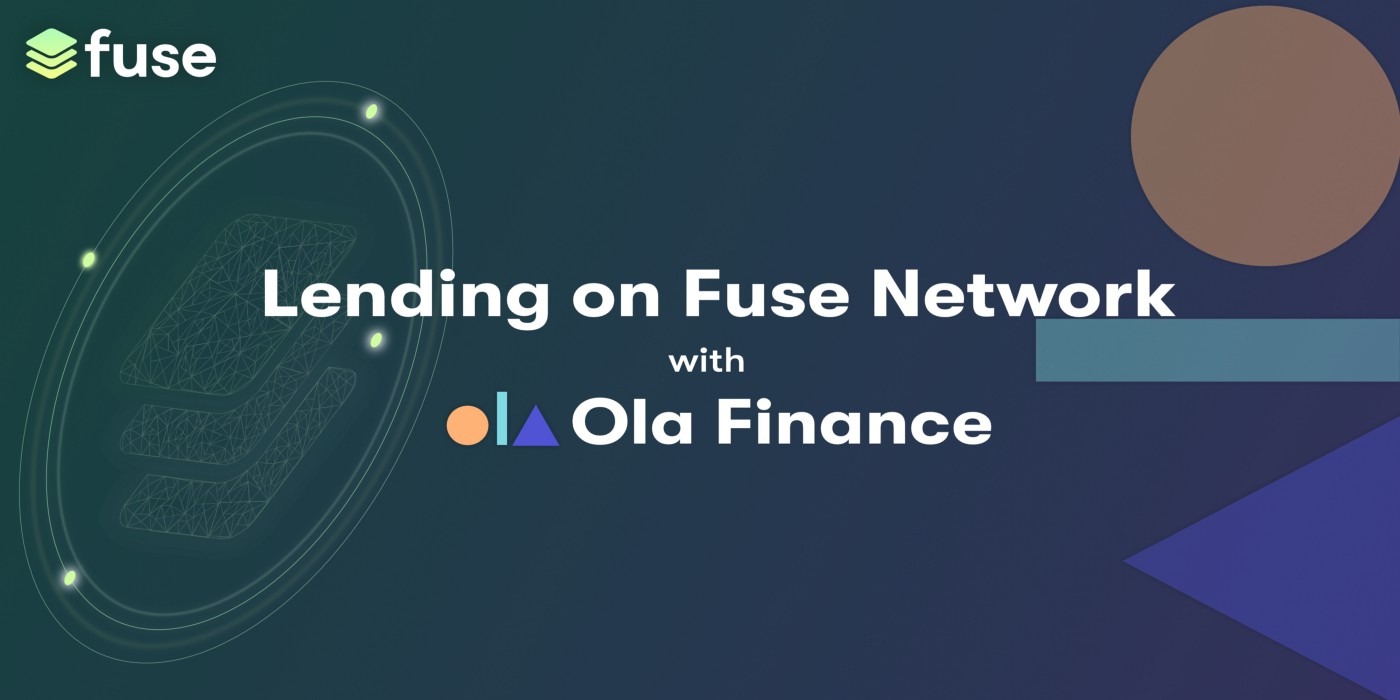Ola Finance is a platform for creating custom decentralized lending networks. Its first lending network is launching on Fuse very soon.
Despite the size and sophistication of the modern financial system, it still leaves many people and businesses underserved, especially in poorer parts of the world. In countries with opaque legal systems and poor contract enforcement, it is often too costly for the traditional banks to lend. And, even in rich countries, access to the modern financial system is often costly to many users in its own right, with the participants facing a lot of red tape and high fees.
Recognizing the shortfalls of the existing financial architecture and the opportunity blockchain technology creates, a plethora of projects have sprung to jumpstart what is known today as the decentralized finance (DeFi) industry. Smart contract-powered lending has been a key element of this drive.
The Issues with the Existing Lending Networks
Major decentralized lending networks such as Compound and Aave have seen enormous success in the DeFi industry. In the space of a bit more than one year, they went from being virtually unknown projects to having billions of dollars of crypto assets locked in them.
The core way in which these protocols work is by enabling users who provide collateral in one crypto asset to borrow another crypto asset from users who lend to the network. The collateral is typically locked in a special smart contract (debt position) and it can be released by repaying the loan. Given that the possibility of legal enforcement is uncertain, the main recourse lenders have is the collateral that usually has to be significantly larger in value terms than the loan it supports because of price volatility.
Despite the impressive growth in the total value locked, the existing major DeFi lending networks have so far mostly failed to reach people and businesses beyond a small circle of highly sophisticated crypto industry players. Perhaps, the main reason for this is that they are designed to be large, unified platforms for a small number of tokens.
Their size means that they cannot be easily customized to the needs of a particular community. For instance, even if the average risk profile of a particular group of borrowers is lower than generally, they will still have to fulfill the same onerous collateral requirements as everyone else. Moreover, in certain scenarios, a rapid price change of a particular token or an attack on the network involving a particular token can cause significant damage to all the network participants, even though they may not have any open loans in it.
From a Lending Network to a Network of Lending Networks
Ola Finance solves the large homogeneous network issue by enabling any community to permissionlessly create and govern its own lending network on top of the platform and choose the eligible assets and other parameters, including the loan collateralization ratio, the interest rate model, the debt position liquidation mechanism, etc. Ola Finance, thus, represents the next step in the evolution of lending in DeFi — from permissionless loans to permissionless creations of whole lending networks.
On its part, the Ola platform will provide various forms of support for the individual networks running on top of it, including per-token oracles and smart contract architecture updates, as well as running a single gateway for access to all the networks. The decisions at the whole-platform level will be subject to global community governance.
One of the most obvious potential use cases of Ola’s technology is the creation of single-token-focused lending networks that could be especially appropriate for payment-centric token communities.
How Fuse will Integrate Ola Finance
Fuse is committed to making payments and DeFi accessible to the greatest number of people, hence Ola’s approach is a perfect fit for creating the first native decentralized lending network on Fuse. The network is going live very soon, and it will initially support four assets both on the supply and the demand side: FUSE, Wrapped Ether (WETH), Wrapped Bitcoin (WBTC) and USDC.
In the future, we also expect multiple payment communities that operate on top of Fuse to launch their own lending networks using the Ola platform in order to boost the adoption of their technology, tokens or services. For instance, the Fuse-powered CuraDAI stablecoin community in Curaçao could boost the adoption of its stablecoin by launching its own lending network on top of Ola.
About Ola Finance
Ola Finance is a competitor in the lending/borrowing segment of DeFi. In this category, Maker, Compound, and Aave are the biggest names. While these giants compete head to head, Ola takes a different approach. Ola is a platform that lets anyone create a Compound-like instance that includes whichever tokens he or she likes (almost). We refer to such instances as Lending Networks. A Lending Network can be created with a few clicks of a button, where its creator tunes a few parameters as they please. These parameters include the tokens that can be lent and borrowed, the collateral factor for each token, the fee rate, and a few more. Once a Lending Network is created anyone can instantly interact with it via the Ola app that acts as a gateway to all Lending Networks. In a short sentence that sums it up nicely, Ola aims to be the “Uniswap/Balancer for on-chain lending”.
We are delighted by the integration with the innovative DeFi protocol and we hope that it will be a major step towards cementing Fuse’s position as the platform for democratizing DeFi.
Follow our social media channels to stay updated on recent news and developments at
.svg)
.svg)











